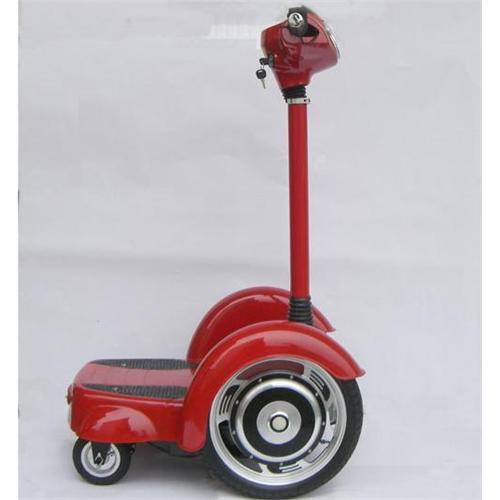Technology Push vs. Market Pull
A few years ago I saw a B-school lecture on Technology Push vs. Market Pull. Discussion focused on the Segway as an example of a failed technology push venture.

Remember the Segway? It was going to revolutionize walking. Steve Jobs called it “as big a deal as the PC” and John Doerr said it “may be bigger than the Internet”. Nowadays “walking reinveted” pretty much serves as a tourist gimmick.
A key mistake for the Segway venture was failure to validate demand. The technology excited entrepreneurs and investors so much that they looked at the wrong problems prematurely. They put $126,000,000 into the company, addressing risks such as limited manufacturing capacity before there was proven demand for the product.
##MVP
A funny, illustrative example from the lecture was the three wheel Segway ripoff. This would have been a simple way to test people’s appetite for replacing walking without all the expensive tech required. MVP much?

##Risk Backlog
Much like product features, business risks need to be prioritized. Segway’s (drastically oversimplified) business risk backlog may have looked something like this:
- Steve jobs won’t give us a pithy quote
- We won’t be able to build enough of them!
- There’s no demand for revolutionizing walking
Hindsight is a harsh mistress, but it’s pretty clear that the demand risk belongs at the top. And Steve Jobs goes at the bottom.
- There’s no demand for revolutionizing walking
- We won’t be able to build enough of them!
- Steve jobs won’t give us a pithy quote
Like any good product backlog, risks have dependencies. You can’t release the world’s best spell checker before having a word editor, so it’s obvious what to focuson first. In the same way the scaling risk above is only applicable if the demand risk is mitigated in the first place. A risk register is a good place to start for keeping track of things and it helps to categorize them by business area if you’re having trouble prioritizing.
##Collective Wisdom & Gospel
Collective wisdom has moved on since the post-dot-com crash. Between Marc Andreesen, Steve Blank, Eric Ries, et. al. the terms customer development and product market fit have become synonymous with new technology ventures. That doesn’t make it any less fun to use spectacular failures from the past to keep us alert.
Beware treating demand-driven-development as gospel, though. A lot of technology products are decidedly short on innovation and a lot of innovation comes from technology pushes. Think of the world wide web, the music synthesizer, the first video game. You couldn’t go around customer validating these terribly well, but if you’re building them on limited time and budget, there comes a time to validate demand. Figuring out when is still more art than science.